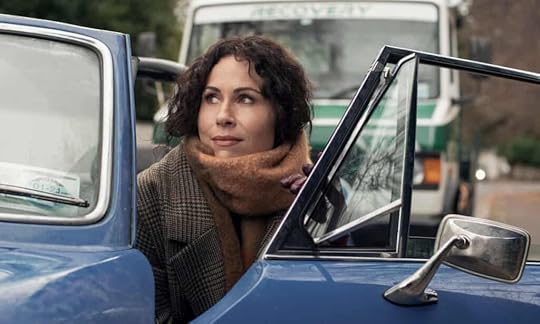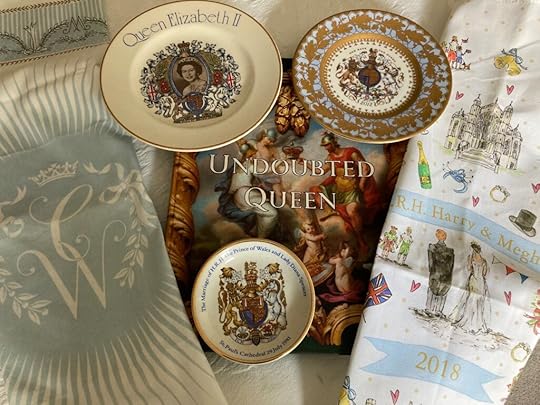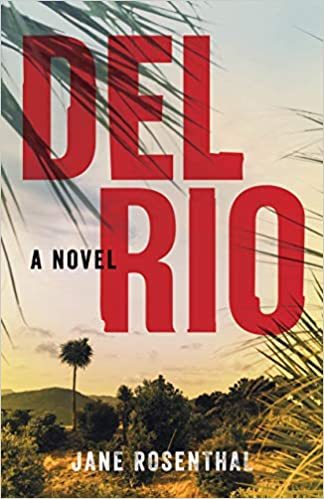Elizabeth A. Havey's Blog, page 8
August 15, 2021
A Short Critique of Modern Love, Season Two…
Modern Love, short films based on stories sent to the New York Times, is back. Season Two. Minnie Driver kicks it of off with a charming story of a woman and the sleek sports car she loves to drive, though it requires many repairs to keep it alive. But slowly we discover the car is really something more, a symbol of the love this woman had for her first husband who has died. Watching her interactions with her daughter and second husband, we realize there is more to that aging auto than snatches of her memory. There is love and something else: a spiritual connection? Or something magical as Minnie drives the curving steep roads of the Irish countryside, always returning home safely.
An Irish background is repeated in another story, where we meet two people traveling on a train from Galway to Dublin. Gradually they speak to one another, then sit with one another, hoping to have a real conversation when they are on the train, heading back to their respective careers after holiday. But why wouldn’t a tale of modern love include an exchange of at least an email address? But it’s a story and the very word story means a surprise is included.
REVIEWS OF MODERN LOVE, SEASON TWO
Critic Roxana Hadadi writes: “Modern Love was affected by COVID-era restrictions, with episodes that filmed in New York state and Dublin, Ireland. But the lack of technical creativity is a noticeable distraction. The green screen is eye-searingly conspicuous, imagined sequences are slightly embarrassing, and an over-reliance on flashbacks signals an awareness that the dialogue isn’t doing quite enough work to communicate the details or dynamics of these relationships in the present. “Modern Love” is easy to watch because it’s so non-challenging and because it asks so little of its viewers. But it’s even easier to forget.”
But we will continue to watch, finding the story lines interesting, and the actors more than capable of awakening the plots. It’s always a combination: writer and actor. If the story doesn’t touch you, all the hard work from the actors might not touch you either.
LOOKING BACK TO SEASON ONE:
The consensus on Rotten Tomatoes: Carried by its charming cast, Modern Love sweet and simple sensibilities are easy enough to enjoy, even if its quaint portrait of modern life in New York City doesn’t always ring true.
My favorites from Season One:
A single book critic bonds with her doorman following an unexpected pregnancy. When a journalist asks a dating app’s CEO if he’s ever been in love, it sparks a conversation that will change the course of both of their lives.A gay couple hope to adopt a child.FINAL THOUGHTS: If you like short stories that shout out a New York City milieu, Modern Love Stories are for you.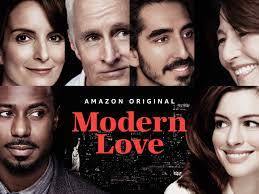 Facebook Twitter LinkedInPinterest
Facebook Twitter LinkedInPinterest
August 8, 2021
A HOUSE FULL OF WINDSORS
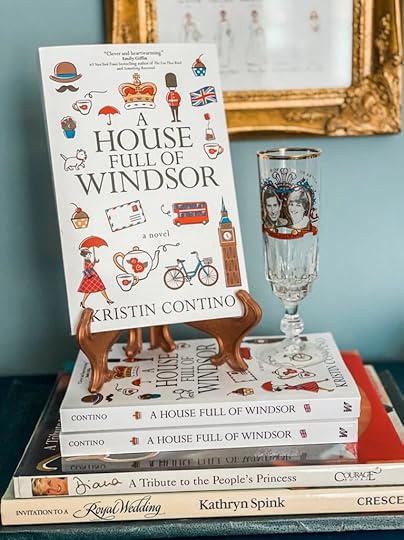 Sometimes you come across a novel that reminds you of your own personal proclivity (and to better explain: a tendency to choose or do something regularly; an inclination or predisposition toward a particular thing.)
Sometimes you come across a novel that reminds you of your own personal proclivity (and to better explain: a tendency to choose or do something regularly; an inclination or predisposition toward a particular thing.)
Those who regularly read my posts, know that I am quirky in some ways, one of them being that I have an interest (a slight passion?) about all THINGS BRITISH. But especially the Royal Family, the Windsors.
And most of you know that this started because of my name, which led me to read British history as if I were preparing for a Master’s Thesis, all while being encouraged by close family members who visited England and brought me memorabilia; all while discovering it was meaningful to cut articles about the Windsors out of newspaper, or save magazines with photographs, ask for books about their lives and watch royal weddings on TV.
My family didn’t mind too much, because if they questioned me on this rather strange proclivity, I could always say it’s just another way of learning more about HISTORY.
But then, along came…
A FELLOW ANGLOPHILE
Because the Internet connects you to people you would otherwise never meet, and thus connected me to Kristin Contino, who when it comes to this particular proclivity, this love of the family of Windsor, certainly has me beat.
Kristin’s many trips to England have been recorded with numerous photos. And when a major royal event was about to take place, she and her family once again made the trip, finding a spot near Windsor Castle and able to be up close and personal observing the pageantry of the marriage of Prince Harry and Meghan Markle. After that, I knew I’d found an even more ardent follower of the Windsors…but that event was only the beginning….
Kristin has a reproduction of a bright red British Phone Booth in her home, not to mention those items which all of us seek out when celebrating the royals: tea towels for weddings; tea cups and plates; photos and books. I have a few. (See some of mine below.) Kristin? She’s the QUEEN OF COLLECTIONS.
And then the final example of her passion, the arrival of Contino’s novel: A HOUSE FULL OF WINDSOR, a delightful story whose main character, Debbie Windsor, falls in love with a member of the landed gentry, Alan Percy—and whether it’s being enthrall to London or Buckingham Palace or her love for Princess Diana and everything royal, Debbie collapses into the arms of this tinged with royalty but not so gentle man—and bloody hell, she gets pregnant. First with Sarah and soon after, with twins!
But later, we find her back in the good old US of A, her marriage over, yet her desire still for all things royal filling up her house. Debbie has become a hoarder. She lives in a house full of windsor. And because she now has trouble navigating her rooms because of the overflowing bins of British mementoes, her three children know that SOMETHING MUST BE DONE.
Will Debbie find a pathway through her living room? Will Sarah, who provides the reader throughout the novel with her Sarah Says tips, have the answer? Maybe so, as her first TIP encourages readers to be ready for company, but then immediately acknowledges that in her family, “dirty secrets are best swept under the rug.”
I’m sure Kristin Contino had fun writing this book. Her photos of her trips to England, her love of those red telephone booths are testament to that. The novel is light-hearted and from page one presages a happy ending. Her characters make predictable decisions so that everyone is jolly and red-cheeked with happiness in the end. And the novel is clever, the hoarding is real, because when you’ve fallen in love with the photos of the Windsors and Princess Diana, it’s understandable that you might go for cheeky Alan, that rotter, who chases birds (that’s British slang for girls)—but in the end decides that bloody hell, you better let your children help you out so that life is cracking again.
Facebook Twitter LinkedInPinterest
August 1, 2021
Memories and Their Power
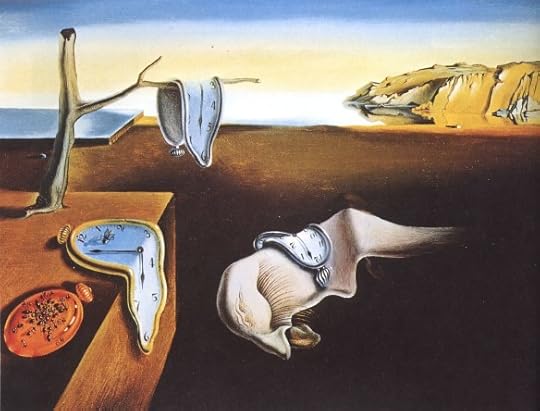
Salvador Dali, The Persistence of Memory
“You have your wonderful memories,” people said later, as if memories were solace. Memories are not. Memories are by definition of times past, things gone. Memories are the …faded and cracked photographs, the invitations to the weddings of the people who are no longer married, the mass cards from the funerals of the people whose faces you no longer remember. Memories are what you no longer want to remember.”
― Joan Didion, Blue Nights
That’s Joan Didion, her words veering toward the negative. Because loss is tragic, hard, challenging. She longs for her daughter. That loss shakes up the foundations she depended on, and I applaud her words as a search for strength.
But can we be nostalgic when we are young? Yes.
Anne Frank was, writing in her diary of days past, knowing those days were gone, that her world was imploding and that she might never again sit in a classroom, walk the streets of Amsterdam free and unhindered, look forward to love, marriage and children.
Anyone who looks back in longing–for a friend, a house, a parent, an experience, can feel and write about their longings–this is nostalgia. You want something back, that you don’t want to forget.
CREATIVITY AND REMEMBERING
There was a time when I began to write, that nostalgia seemed to propel me. Why? I was young, and I saw that my experience was in some ways limited. Some changes in my life had already happened (loss of a parent, early responsibilities as a result). And I saw that I didn’t want to relive my childhood, but that it dwelled within me, making my losses and gains part of me, the engine of my creativity.
Because when you write, you are either pulling things out of your own experience or making shit up. Both land on the page, and wow, you’re a writer. (Though not necessarily a good one. It takes time, lots of time. Maybe forever.)
SO WHAT IS THE ENGINE OF CREATIVITY?
When Author Ann Patchett (Bel Canto, The Dutch House, Commonwealth) takes a memory and infuses it with meaning, she then uses it in one of her novels. She describes her process this way: “I’m very sure that my memories are true and accurate, and if I put them up against the memories of my family or my friends, they would have very different true and accurate memories. Even if they differ…” Because we know that fiction comes from seeds of experience. IT COMES FROM LIFE, FROM LIVING. And what one person sees or hears or feels, can differ from another.
EVEN FICTIONAL CHARACTERS LIVE IN OUR MEMORIES
One of my favorite authors, Elizabeth Strout, discovered that her characters refused to stay within the pages of past books. Though Strout left her home in Maine for New York City, Maine stayed with her. So did the voice, the face, the life of Olive Kitterridge, the eponymous title of the collection of short stories that won Strout the Pulitzer for fiction. But Olive wasn’t finished. She continued to speak to Strout, and thus Olive Again came to be, more stories that take us back to Maine, but also (and this is to amazing and clever) bring back characters from Strout’s other novels. It’s delightful for Olive to find herself living in the same senior facility as the mother from Amy and Isabel, that being only one example. After writing My Name Is Lucy Barton, Strout felt compelled to learn more about Lucy’s beginnings and sent her back to a small town in Illinois to reconnect with her siblings and other in a collection of stories, Anything Is Possible. We all do this: let our memories grow, fill out the stories of our lives, enhance them. At some level WE ARE ALL STORY TELLERS.
WRITE IT DOWN
Many of us kept or still keep a diary. It’s our lives on paper, our deepest thoughts and even our anger and our hurts. It’s not fiction, but it can fuel fiction and it always comes from the power of memory.
Talk to an old friend. Discover that the mention of a place, a high school crush, a certain teacher brings back a flood of memory. And though they aren’t always positive, they are part of our lives. Joan Didion wrote Blue Nights after losing her daughter. She wrote The Year of Magical Thinking after the death of her husband. Joan used the power of her memory, of her words to seek healing. Each and everyone of us is a vessel of stories. Write them down. They are part of you, and they have power.
Facebook Twitter LinkedInPinterestJuly 25, 2021
Writers and where they live… Part One

The Santa Ana Winds of California
I’ve written a memoir of my early years in Chicago. I’ve written about PLACE (the house, the streets, the vegetation, the traffic, the people on the streets) because it colors so much of who we are. (You can reread my first post about PLACE here.)
No one can write fiction, a memoir, a biography without PLACE becoming a major character. Think of the wonderful selection of memoirs that have become best-sellers: Black Boy, All Creatures Great and Small, Born a Crime, Becoming, When Breath Becomes Air, The Glass Castle….all are filled with references to the place the author has lived, the streets he or she has walked.
And if you have moved during your life (I’ve lived in three different states) or even if you have remained in the same place your entire life (New York City, Colorado Springs, Huntsville Alabama, only to name a few) HOW DIFFERENT your life has been from the lives of others and from mine.
ILLINOIS
Illinois is flat, flat. Even as a child, I knew that was in some way a detriment, as if flatness could be the butt of jokes. Then, after fourth grade, my amazing mother took me and my brothers to California! My uncle and cousins lived there, so why not! We traveled on the California Zephyr that runs from Chicago to San Francisco. WOW! Our train revealed parts of the country I had never seen: the plains of Nebraska, the Rocky Mountains (real mountains not hills), Salt Lake City (they washed our train there) and on to San Francisco: the trolley cars, the harbor, the steep streets.
Weeks later, after seeing the Grand Canyon and Albuquerque, New Mexico, we headed home on another train, the El Caspitan that runs between Santa Fe, New Mexico and Chicago. I met a girl my age on the train. I can’t remember where she lived, but it was a more glamorous place than what I was going home to. So when she asked me where I lived (flat flat Illinois) I said we lived near the “hills and the flats.” (a truly fourth grade answer) But it wasn’t a total lie. Beverly Hills, Chicago, is called “hills” for the following reason:
High bedrock under the retreating glaciers left the most prominent feature in the area, the Blue Island Ridge in South Chicago, a 6-mile-by-1-mile table of land that sits 25 to 50 feet above the adjacent flatland. Residents often identify their community as “Beverly Hills,” a reference to that glacial ridge just west of Longwood Drive, the highest point in Chicago. Wow, the highest point in Chicago … Even as a fourth grader, I knew that was something, and I lived two blocks from that RIDGE, which we called, “the hill.”
BEFORE AND BEYOND ILLINOIS
But after Illinois, there was Iowa (some hills) and then for the last seven years, California, I could see the bottom of a mountain out my window. But how does one, how does family gravitate to a place?
Again, the Uncle that moved there, his family, my cousins. We kept up the visits, weddings, touring. My brother moved there, and then one of my daughters did; grandchildren were born, and so yes, we did our California time and it was wonderful. I’ve written about California on this blog.
But I’m not alone, some of our most treasured authors have written about California, Joan Didion being one of them. Her works include: Slouching Toward Bethlehem, Play It As It Lays, The White Album, The Year of Magical Thinking and Blue Nights. The last two volumes are diary-like, Didion trying to come to grips with the death of her husband, John Gregory Dunne, and then the death of her daughter, Quintana Roo.
THINGS SO CALIFORNIA: The Santa Ana Winds
If you have ever been in California when the Santa Anas blow, then you will feel them blowing in Didion’s passage:
There is something uneasy in the Los Angeles air this afternoon, some unnatural stillness, some tension. What it means is that tonight a Santa Ana will begin to blow, a hot wind from the northeast whining down through the Cajon and San Gorgonio Passes, blowing up sand storms out along Route 66, drying the hills and the nerves to flash point. For a few days now we will see smoke back in the canyons, and hear sirens in the night. I have neither heard nor read that a Santa Ana is due, but I know it, and almost everyone I have seen today knows it too. We know it because we feel it. The baby frets. The maid sulks. I rekindle a waning argument with the telephone company, then cut my losses and lie down, given over to whatever it is in the air. To live with the Santa Ana is to accept, consciously or unconsciously, a deeply mechanistic view of human behavior.
WIND, FIRES
What did I love about California? Besides being near my grandchildren…sunshine is ever present. It lifts your spirits, though there is something called June gloom, but that is infrequent. The blue sky is full of dry soft winds, now and then a jet stream (at least where I lived). There are pepper trees and jacaranda trees, roses everywhere. Some people say they help hold back the fires.
Because yes, there are fires. (And earthquakes, though in the 7 years we lived there, we had only two experiences: one when my desk kinda rolled; the other hardly felt. But we bolted our TV to the wall, used museum glue behind art hangings. We also had two large emergency canisters in our garage which we never needed.
Wherever people live, they adjust. Joan Didion writes:
Los Angeles weather is the weather of catastrophe, of apocalypse, and, just as the reliably long and bitter winters of New England determine the way life is lived there, so the violence and the unpredictability of the Santa Ana affect the entire quality of life in Los Angeles, accentuate its impermanence, its unreliability. The wind shows us how close to the edge we are.
For instead of “fire and rain”, California has fire and wind–“It never rains in California, but Girl don’t they warn ya…
FINAL THOUGHT
As Edward Albee wrote: There is science, logic, reason; there is thought verified by experience. And then there is California.
Next Week: Part 2
Facebook Twitter LinkedInPinterestJuly 18, 2021
Three Questions to Ask Yourself When Things Go Wrong
 Deepak Chopra is a spiritual man who has spent his life helping others discover their spiritual life, and to aid them in maintaining that life through meditation and a close understanding of one’s needs and human foibles.
Deepak Chopra is a spiritual man who has spent his life helping others discover their spiritual life, and to aid them in maintaining that life through meditation and a close understanding of one’s needs and human foibles.In one of his articles, Chopra addresses how to deal with your life when things are not as you planned. He has created THREE QUESTIONS TO ASK YOURSELF WHEN THINGS GO WRONG.
He writes: a setback is one thing. So is a challenge. But sometimes so much comes upon us, that we find ourselves in crisis. Panic ensues and the hole we are digging for ourselves, or the hole we have fallen into, is getting bigger.
Wisdom is needed. Impulse must be pushed aside. Decision making sometimes requires that proverbial deep breath, a pause in the panic we are leaning toward, and a better decision- making process.
QUESTIONS TO AVOID:
What is wrong with me? Stay calm. You are human. Don’t blame yourself.Whom can I blame? Again, think things through, look at both sides of the problem, the argument, the situation. Breathe.What’s the worst-case scenario? Don’t go there. Don’t imagine that things are only going in the wrong direction. Look for some light, find something positive you can focus on.Here Deepak Chopra asks and answers some questions to help you when THINGS GO WRONG.
Is this a problem I should fix, put up with or walk away from?You need to answer this question clearly and rationally, or your vision will be clouded. Without even knowing it, you will be acting under the influence of negative emotions such as fear. You will give in to impulsiveness or fall back on old habits.
CLARIFY YOUR INNER CONFUSION. First step: consider after talking to those you trust, a course of action that begins with finding a fix. And if you can’t think of a fix, ask yourself why. Perhaps someone or something (a lack of money and time) is blocking you. It is always worthwhile to search for a fix and commit yourself to finding one. When you have finally exhausted your realistic options, only then will your begin to decide to put up with the situation (using patience, not passivity) or walk away.
Who can I consult who has solved the same problem successfully?You need help to solve a heavy problem. Isolation is not good as we become afraid and depressed; we draw into ourselves. There can also be shame and guilt which gives us even more reason to completely shut down.
Best to find someone who has gone through the same crisis you are facing. It gives you an example to follow and a confidant who understands your pain, keeps you from withdrawing into isolation. Victims feel alone and helpless. Reach out to someone who has not been victimized by the thing you are now facing.
And we aren’t talking about hand-holding or shared misery, or even therapy. There are no substitutes for talking to a person who has entered a dark place and come out successfully. But where do you find such a person? Ask people; seek support groups; find blogs and forums; don’t stop until you find true empathy from someone you trust.
How can I reach deeper into myself for solutions?This is always up to you. Though your crisis is all-consuming, the world OUT THERE won’t change until the world IN HERE does. Deepak says:
The level of the solution is never found at the level of the problem. Knowing this, you can escape many traps people fall into: repetitive thinking; applying yesterday’s outworn choices; obsessive thinking and worry; etc etc. You have more than one level of awareness, and at a deeper level there is untapped creativity and insight.
YOUR HIGHER SELF: whatever you call it, soul, Atman, Holly Spirit, muse, inspiration must experience the place within where the light dawns and brings hope. Peace is possible. There is certainty that you will find a path forward.
FINAL WORDS FROM CHOPRA: You will find this place. Even in the worst of crisis we experience flashes of it. Inhabit that level of awareness that brings solutions. Know that level exists. Make a plan to get there and use techniques available to you: meditation, reflection, contemplation, prayer.
Reduce your stress. Seek others who understand consciousness. Read books that inspire you and describe what it means to go on an inward journey.
The important thing is that you take the first steps inside. Find a path out of your present darkness, and don’t submit to fear and despair. Find those who lead the world into a future full of light.
art: a cairn in Aruba
Facebook Twitter LinkedInPinterestJuly 11, 2021
Why Do Men Want to Control Women?
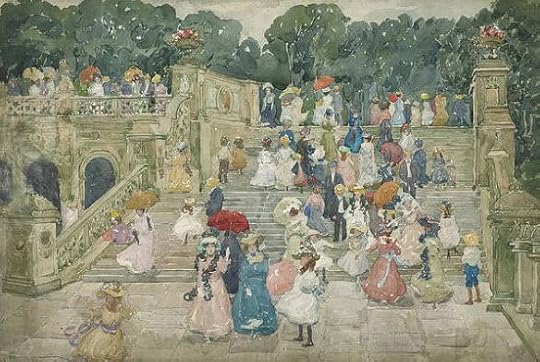 Charlotte Gray, while reviewing Amy Sohn’s THE MAN WHO HATED WOMEN, writes in the Wall Street Journal: “In 1873, a new federal law prohibited the distribution and promotion through the U.S. postal service of ‘obscene, lewd or lascivious’ material. The legislation covered not only dirty postcards and sex toys, but also pamphlets about contraception and sexual health. A booklet about marital relations or an abortifacient powder was now considered as indecent as an advertisement for a brothel.” The question: who caused this to happen: The answer: Anthony Comstock.
Charlotte Gray, while reviewing Amy Sohn’s THE MAN WHO HATED WOMEN, writes in the Wall Street Journal: “In 1873, a new federal law prohibited the distribution and promotion through the U.S. postal service of ‘obscene, lewd or lascivious’ material. The legislation covered not only dirty postcards and sex toys, but also pamphlets about contraception and sexual health. A booklet about marital relations or an abortifacient powder was now considered as indecent as an advertisement for a brothel.” The question: who caused this to happen: The answer: Anthony Comstock.Amy Sohn describes in her book, The Man Who Hated Women, how Comstock’s forceful move to pass this federal law dealt a severe blow to information that women needed to care for and understand their bodies.
The law profoundly affected women’s health. It not only supported a prudish misogyny that harkens back to Puritan history, but aspects of it can still be found in laws that prevail today in parts of the U.S.
WHO WAS ANTHONY COMSTOCK?
Certainly he was a woman hater, also a Congregationalist, who believed in the Victorian ideal of womanhood: the woman should only be “the angel in the house.” Born in 1844, Comstock went from being a store clerk to turning to anti-vice activism. He was offended by what he called the moral corruption of the Gilded Age in New York City.
WHY TAKE IT OUT ON WOMEN?
Like some of our cities today, New York during the Gilded Age was the center of huge wealth but also abject poverty. Wealthy men were eager to take advantage of poverty stricken women who walked the streets of New York as prostitutes, and who had nothing to protect themselves from unwanted pregnancies and the dangers of childbirth.
Sohn writes in her book: “…Comstock lumped women together with “sinful” practices.” He got the YMCA to form the Suppression of Vice committee and to make him their lobbyist in Washington. This allowed him to push for harsher penalties against obscenity peddlers. Then, to convince the male representatives in DC, “Comstock organized the most vivid exhibition of sex toys the capital had ever seen.” Congress members handled the toys and other articles, saying they would pass the law he wanted.The result: The Comstock Act of 1873. Other states went on to pass similar laws.
Don’t We Often Say : When someone is obsessed with something, he might actually like it.
Comstock could not keep the dirt out of his own eyes. He began seeing pornography everywhere, started lawsuits that tried to subdue materials “as diverse as lottery tickets, pornography and medical books written my physicians.”
Being unable to quell his own urges, and hating women, Comstock, decided to fight EVERYTHING and everyone, especially women. Gray writes that he hounded “sex radicals” the eight women who were caught up in sex-oriented movements of the time. Those included abortion, spiritualism, atheism and anarchism.
THE WICKED EIGHT
In her book, Amy Sohn focuses on eight women Comstock went after, sexologist Ida C. Craddock getting the most attention. Unable to attend the University of Pennsylvania because of her gender, Craddock studied comparative religion and developed a passion for sex and symbolism.
At the 1893 World’s Fair in Chicago, Craddock watched a belly dancer, then later wrote that dance utilized an ancient religious rite, symbolizing self-control of sexual pleasure. But Comstock was also watching. He called the performance obscenity, and wanted to jail the performer.
WOMEN AND MEN IN THE BEDROOM
Ida C. Craddock fought for women, argued against marital rape, telling women they had a right to enjoy sex. Craddock printed business cards that read: Scientific Motherhood, Prenatal Culture, Right Living in the Marital Relation. She sent information through the mail: “putting herself right in the crosshairs of the Comstock Act.” Comstock won that battle, having her arrested in 1902 for being “lecturer of filth.” Eight months later, unable to face prison, Ida C. Craddock committed suicide.
THE AFTERMATH… The early 1900’s was a time when newspapers pulled in readers with wild tales of sex and sin. But gradually, Comstock’s harsh beliefs no longer coincided with the growing power of women. Though he died in 1915, his law continued to stay on the books for many more decades, inciting women to claim their power, speak out for their rights and needs. Year to year this fight intensified, encouraging “transformative feminist activism.” Comstock might actually have helped the feminist movement, helped women see the need for more agency in their own lives.
Ms. Sohn ends her book with a warning: “Wombs are still a battleground because of what they represent.” Then she then quotes Ida Craddock: “I would lay down my life for the cause of sex reform; but I don’t want to be swept away, a useless sacrifice.” Craddock died, was forgotten, but Sohn and others have successfully resurrected this amazing woman.
Ida Craddock’s manuscripts and notes are preserved in the Special Collections of the Southern Illinois University Carbondale. Her battle with Anthony Comstock is the subject of the 2006 stage play Smut by Alice Jay and Joseph Adler, its world premiere at Miami’s GableStage in June 2007.
Amy Sohn’s book is THE MAN WHO HATED WOMEN Farrar, Strauss and Giroux Publishers. Artwork: The Gilded Age, Central Park New York City
You might also like. https://boomerhighway.org/books-that-pave-the-way-for-lifes-journey/
Facebook Twitter LinkedInPinterestJuly 4, 2021
Celebrating the Positive
HAPPY FOURTH OF JULY, Dear Reader. And when you read this, I hope you will feel some sense of peace and some happiness.
I’m not counting on OUT AND OUT JOY! That’s a big hope. It’s a word I use to describe my wedding day, the birth of my children and grandchildren.
But this year of 2021, we have certainly BEEN THROUGH IT.
Some of you have lost family to Covid19. Many of your know neighbors, work partners and friends of friends who have lost someone. And loss has trickled down: loss of jobs; loss of investments (that trip you couldn’t take); loss of friendships, because of the turmoil in our government, the splitting apart of relationships because “I don’t need to be vaccinated.” Well, if you are going to be around me and my family, YES YOU DO.
I can deal with this stuff as it relates directly to me. But I get in the major “MOTHER BEAR” mode when I think that people against the vaccine, for whatever reason, might infect MY FAMILY. THAT MAKES ME CRAZY.
So on this FOURTH OF JULY weekend, I am wishing your health and safety, joy in family and friends. I also support each and everyone of you who decides to CHANGE IT UP. Maybe that family gathering isn’t for you this year. Maybe you are against fireworks, especially if they could cause fires in our “getting too warm” climate.
The one thing I might suggest, especially if you will be staying home this 4th of July: that you reach out to your neighbor. You know the one. He always helps carry in a heavy package, sometimes shovels your walk or let’s you know your car has a flat tire; she is kind to your children, arranges play dates, abides by your rules as to sweets and is always there when you need a friend or a mother, because yours lives miles away. It is that community that is built from house to house, street to street. It is that community that will do much to heal our American wounds.
Small starts are good. They will make each of us better. They will heal us.
Peace, Everyone, and a Happy Fourth of July.
Facebook Twitter LinkedInPinterestJune 27, 2021
JANE ROSENTHAL’S DEL RIO: AND THE SEEDS OF A FICTIONAL WORK
I met Jane Rosenthal during a Women’s Fiction Writers (WFWA) retreat in Albuquerque, New Mexico. We were both living in California at the time, enjoyed each other’s company, our love of writing, and discussed the inevitable struggle of getting published.
And today, I’m pleased to present to you, Jane’s second published work, DEL RIO, a Novel. I hope you will enjoy reading about Jane’s process and how personal experience contributed to her vision for this story.
Jane’s Voice: My novel Del Rio is set in a fictional town in the Central Valley of California, halfway between San Francisco and Los Angeles. The Central Valley is a place made up of small towns, near where I lived, towns so accessible that they were where I went to get my hair styled, grocery shop or go to the bank. This particular town, Del Rio, doesn’t really exist, except in my imagination.
One of the best compliments I ever received for my manuscript occurred when I was pitching the book at a conference. An editor, looking over his glasses at me, pronounced: “Wow, so do you live in Del Rio?”
The place seemed that real to him. And in a way, it is. Writing is a journey, and this book took me on one.
JANE’S REALIZATION THAT MUCH OF DEL RIO WAS NORTH OF THE BORDER …
Jane says: One Saturday a few years back, something happened that changed the whole trajectory of the book. I’d gone into town to do errands. But when I got to Wells Fargo Bank, the line was out the door. That had never happened before. But I’d never been there on a Saturday, mid-month, payday for the farm workers. It didn’t take long before I realized I was the only native English speaker in the entire line.
A lightbulb exploded in my head. I didn’t need to go south, at least in the book, to be in Mexico. I WAS on the west coast of Mexico. Right then, right there. After I made my deposit, I headed to my office, to sit down and write the first sentence that would become Del Rio.
That sentence came easily: Fletcher wanted me to meet him at the Starlight Lounge, an old roadhouse set on the banks of the San Joaquin River, a few miles south of town.
This was the voice of Callie, my protagonist. And even though Del Rio starts and ends in California, Callie travels to the west coast of Mexico, to a fishing village called San Benito, a place that is Night of the Iguana on steroids. Her mission: to search for a killer.
Then Jane reminds us: You’ll have to read the book to find out what happens once Callie gets there!
FICTION THAT SHOUTS FOR ACTION
Jane’s book is a fascinating read. She tells us: I’d intended when I first started on this Mexico Trilogy to set the second book solely on the west coast of Mexico. I’d been to Mexico’s Pacific coast many times and loved its “Night of the Iguana” feel. I wanted to give the reader that atmosphere, but a totally different feel and cast of characters from the Mexico City setting I had recreated in Palace of the Blue Butterfly. (get it on Amazon)
But then she saw that the seeds of her story were literally planted in the United States.
CENTRAL VALLEY, CALIFORNIA WORKERS–WHAT THEY NEED AND DON’T HAVE: BACKGROUND INFORMATION….
Farmworkers are not protected under the National Labor Relations Laws (NLRA).Farmworkers are exempt from many protections under the Fair Labor Standards Act (FSLA). Exempt from most minimum wage and hour guarantees.They are not entitled to overtime pay or mandatory breaks for rest or mealsThere are few labor protections for farmworker children.Most farmworkers are excluded from federal minimum wage laws and other labor protections, including the right to overtime pay for workers that work more than 40 hrs./wk.FWs are not protected from retaliation by federal law when engaged in labor organizing.They are not entitled to receive attorney fees under the Migrant and Seasonal Ag. Worker Protection Act.Many FWs on small farms don’t even have access to toilets and hand-washing facilities and drinking water.There is a Lack of Transparency in the Food system.The Fair Labor Standards Act is supposed to protect all workers with respect to the federal minimum wage and overtime pay, even undocumented workers. However, workers have little or no way to enforce their rights.
FINAL THOUGHTS
Read Del Rio for a great story, as well as a look into the dangerous games being played, the innocent lives being risked. Because it is happening, right before our eyes.
And if moved by Rosenthall’s experience, the words in her book, the information I have provided here, please go to https://farmworkerfamily.org/information and donate. For more information that conflicts with above, go to: http://www.lacooperativa.org/farm-workers-know-your-rights-in-the-workplace/
P.S. California produces over 350 commodities; including 1/3 of the nation’s vegetables and nearly 2/3 of the nation’s fruits and nuts. California produces 90% of the strawberries grown in the U.S. Between 1/3 and 1/2 of all farmworkers in America reside in California, or roughly 500,000 – 800,000 farmworkers. Approximately 75% of California’s farmworkers are undocumented; 83% in Santa Cruz County. Approximately 1/3 are women, and they range in age from their teens to their 60s. In addition, there are 400,000 children working in U.S. fields;
Facebook Twitter LinkedInPinterestJune 20, 2021
The Story of Three Fathers
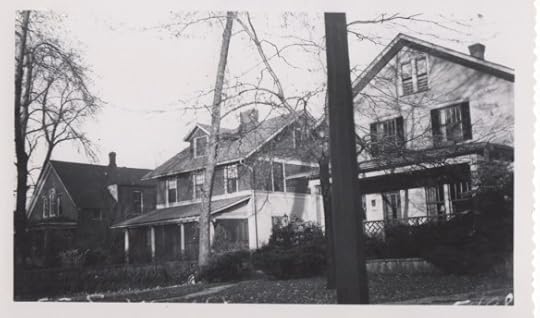
These were neighborhoods that encouraged walking and friendliness.

The 99th Street Train Station
This is the story of three fathers in my life and the neighborhood that connected them. It is the story of a typical southside Chicago neighborhood where city blocks of various-styled houses marched along, occasionally interrupted by a cluster of stores–commerce that arose because of the presence of a Rock Island Railroad station at 95th, 99th, 103rd etc.The neighborhood grew around access to the train and the city north. Sidewalks lined every block, slicing between the lawns of the houses and the lawns of the parkway where elm trees grew and short streetlights supplied only pools of light, because that was all that was needed. These were neighborhoods that encouraged walking and friendliness.
My father lived on the street with the simple name Wood. In the middle of my father’s block, three houses with three very different families lived side-by-side, fruit trees or a driveway marking off property lines. Of course each block had a house on either end—the proverbial corner house that had a certain cache. But if you turned the southern corner and walked past three other houses, you’d come to my father-in-law’s house that sat back from the sidewalk.
That’s how close these two men’s lives were geographically in the quiet neighborhood of Beverly Hills in Chicago. My father, Albert Pfordresher, was eight years older than Edward Havey, so they never attended either grade or high school together. They did go to the same church. And ironically, after each was married, they lived in those same houses, the ones where they had previously lived with their parents.
But my father died suddenly at the age of 45 when I was just a child, and thus would not be there when I rode my tricycle and then my two-wheeler around the block, past the house where Edward Havey was now living with his growing family—which included his first son, John—my future husband.
So you see, this is a story that can be repeated over and over in the lives of many folks in this country, folks living in farm towns or small cities, or living in the suburban areas of huge cities. It’s a story of bumping into people, of knowing them and connecting with them and finally NOT being surprised when the connection becomes deeper, becomes family. It’s a story that echoes with the phrase—it’s a small world. Because then, when I was growing up—it was smaller. People grew up and stayed—like my maternal grandmother who moved from a big Victorian home with her many brothers and sisters to a smaller house—again just blocks away. And lived there for over 65 years—content.
But Readers, you know all about change and far-flung relationships. You know all about the positives and negatives of insular living versus spreading your wings. It’s history, often family history. It’s life. It’s all very fascinating.
In 1931, a news article appeared in the neighborhood newspaper, the Southtown Economist. It was a review of a recent musical that occurred at the local church, St. Barnabus. Albert Pfordresher was the co-producer and Edward Havey took part in the performance. The article also mentioned Bob Singler, whose father was my grandmother’s brother. All families who would be intertwined.
But in 1931, my mother was only fifteen. I guess I wasn’t even a glimmer in anyone’s eye at that point in time. But so fascinating to imagine my father putting his hand on Edward Havey’s shoulder and saying,
“Wow, thanks for all that you did to make this performance go so well. It was great. We should get together more often.”
And my father-in-law responding,
“We should. Why you’re just around the corner from me. Maybe we could sit on your porch and talk about life and our futures.”
Imaging and wondering about conversations that could have taken place works for me. After all, I’m thinking about fathers today and want to say thanks to my father. Even though his untimely death took him, he left me with an amazing mother and my two loving brothers. And thanks to my father-in-law, whose courage and strength got him through WWII so he could come home and with my mother-in-law bring my future husband into the world. And thanks to my husband, my best friend, my advocate, my partner in all things.
To quote a writer whose words truly touched me: There’s something like a line of gold thread running through a man’s words when he talks to his daughter, and gradually over the years it gets to be long enough for you to pick up in your hands and weave into a cloth that feels like love itself. ~John Gregory BrownCredit: Family photos and www.bapa.org Part of an ongoing Family History Project
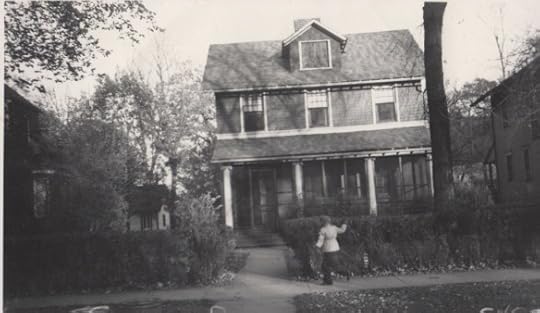
I guess this was a day when I was not riding a bike.

A typical south side street.
Facebook Twitter LinkedInPinterestJune 13, 2021
Ella In Her Garden
Ella can feel numbness moving into her legs. She’s been sitting in the garden for about ten minutes, feet tucked under her buttocks, gloved hands probing with the iron weed digger. Her angle is wrong. She shifts, the tingly sensation of flowing blood bringing back legs, feet.
The baby also shifts, a slight, quick wave of motion. Ella pounces on the tiny elm tree still rooted among the coreopsis. She leans another way, continues to work with the digger, her mind plotting what to do next: repot the small begonia that lies on the ground, its clay container broken by running squirrels; then deep-water the newly planted Spirea that might die in this drought.
The planting is a game of distraction, and the hot sunlight, the intense thrumming of crickets and cicadas. But she loses the game at least once an hour, sometimes every twenty minutes. The amniocentesis results are due today. Her portable phone is on the picnic table. David will be calling at lunch, talking about other things, waiting for her to break in, tell him, if she knows.
The baby moves again. Ella throws the digger to the ground, works with some effort to stand, her body no longer lithe, elegant. She’ll have Steve, who mows the lawn, dislodge the elm with a pitchfork.
Months of her life have been taken over by a fierce desire to bear and deliver another healthy child, a child to deny her aging or loss of touch with this growing world. She will do everything to keep this child, and yet living is in match step with exposing oneself to loss. “No matter what the results, Ella, with the choice you have made, there’s nothing we can do. You realize that,” the doctor had said.
Yes, she does, always certain she wants to get pregnant, know the health of the fetus. But that time is now. The moment close. And yes, the irony of testing.
She’s carrying this baby around inside her and it’s moving now, and no matter what the words are at the other end of the phone, it will still be moving around inside her. If the doctor calls and says, “Ella, you are carrying a Downs Syndrome child,” the fetus won’t disappear, it won’t begin to shrink and slip away like a cloud losing moisture. The Downs Syndrome baby, the baby with neuro-tube defects, the anencephalic baby will still continue to grow inside of her.
Ella walks to the shed, hunts in its mustiness for the pitchfork. The grass is brittle beneath her tennis shoes, waves of air touching her like solid warm hands. She walks back, looking like a perfect balancing act, moving about her tasks as if every breath in the last few years has been stored up to get her to this point. Ella isn’t just pregnant. She is experiencing an amazing fulfillment of a wish.
The cicadas hum. The phone doesn’t buzz. She works at the elm seedling with the pitchfork.
“Mom…” Sarah comes around the corner, her hair springing away from the right side of her head where she has tied it with a big pink ribbon that matches her pink tank top and shorts. Ella reaches out to touch the top of her daughter’s head, the two strangely silent with each other.
Even before this pregnancy, Ella had crazy moments when she would look at her two young daughters, seeing them as her own flesh, slightly changed blueprints of herself. Touching them, her body would expand, become warm like the bodies of pregnant women. Her breasts would soften against Carrie’s chest, her abdomen balloon out to hold Sarah. The physicality of motherhood shouted at her. She needed that again, needed to make her body work again. She argued against this. Educated women do not succumb to thoughts of being “baby machines.” But Ella did succumb.
Sarah has sensed a distance in her mother all week. She knows she can use it to her advantage.
“I want to ride over to Lockwood’s and buy a pop.”
“There’s some in the house, better yet, I have fruit juice.”
“I’m kinda in the mood to ride my bike. Can I take a couple of dollars?”
“Okay. Take what you need, but watch the sugar. You know how you get.”
Sarah comes and puts her arms around her mother’s disappearing waist, buries her head in her chest—just for a moment. Ella had tried before to have this third child and then miscarried. And though she sometimes thinks about it now, it’s not as painful, this new pregnancy altering that sorrow, the pain, the hours of Ella being silent, wounded.
Waiting for the amnio results is better than what she has already been through. She is sure of this. She’s lived it, learned from it. Fear is a destructive force that can work against your joy and hope. Her doctor was firm: set fears aside. Statistics: only one fetus, out of one hundred conceived by women over the age of forty, would come into the world with Downs Syndrome. And Ella had already delivered two healthy children. The doctor also reminded her that anytime a woman conceives, there are chances that she could give birth to a child with some anomaly.
Her fertility is a gift, though modern medicine has played a part. And yes, she has walked down some dark passageways in her mind, but nothing will go wrong. She has set aside her fears. She will love this baby no matter the sex, the birthweight, the chromosomes. No matter any of it.
Back in the yard, Ella picks up the pitchfork, again works to loosen the elm sapling from her garden patch. If she is careful, and there are enough roots, she can replant it at the back fence.
And then, her phone rings.
P.S. the following was written by Ilana Lowy: from her Prenatal Diagnosis: the irresistible rise of the ‘visible fetus. Prenatal diagnosis was developed in the 1970s, a result of a partly contingent coming together of three medical innovations-amniocentesis, the study of human chromosomes and obstetrical ultrasound-with a social innovation, the decriminalization of abortion. Initially this diagnostic approach was proposed only to women at high risk of fetal malformations. Later, however, the supervision of the fetus was extended to all pregnant women. The latter step was strongly favored by professionals’ aspiration to prevent the birth of children with Down syndrome…
Debates on such dilemmas are usually limited to professionals. The transformation of prenatal diagnosis into a routine medical technology was, to a great extent, an invisible revolution. Read more here: https://pubmed.ncbi.nlm.nih.gov/24440137/
Picture Credit: Golden Light, Colleen Taylor. Thanks to FINE ART AMERICA
Facebook Twitter LinkedInPinterest
